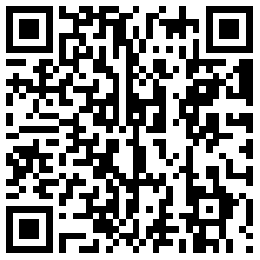想必大家都经历过如下惨剧:
1、会议论文投期刊,重复率过高,被打回;
2、不同审稿人意见相左,不知道听谁;
3、一不小心投了野鸡期刊,赔了夫人又折兵;
4、稿件遭遇“脆拒”(desk rejection);
5、编辑要求大修,大修之后还是被拒稿了;
6、编辑要求补实验;
7、编辑要求balabala……
本文整理自科学网的Science Talks。特邀多名学术出版业「圈内人」,为作者们提供最可靠的期刊「内部消息」。

我们从中挑选了比较有借鉴意义的20个问题和专业回复,给大家做一些参考。

Q1: 三个意见,两个修,一个拒,编辑选择拒,如何申诉能让编辑重新考虑?
A1:编辑部会参考审稿意见,最终决定是接受论文还是拒稿,编辑部的工作就是践行期刊的编辑标准。编辑部可能不会改变决定,但您仍然可以选择通过电子邮件向他们提出申诉,解释为什么您认为不应该拒稿,并提供支持您主张的依据。编辑部收到意见相反的审稿人报告时,通常会请其中一名成员担任审稿人。您的情况可能是,编辑部的某个成员给出了“拒稿”意见。
The final decision on whether to accept or reject an article based on the reviewer reports will lie with the editor, as it is their job to apply the journal’s editorial standards. It may be unlikely that they will change their decision, but you can still choose to make an appeal by emailing them and explaining why you think the decision was incorrect, providing evidence to support your claims. When an editor receives conflicting reviewer reports they will often consult a member of the Editorial Board who will act as an adjudicator. It may be that the “reject” report came from a member of the editorial board in your case.

Q2:同行评审关注哪些方面呢?有什么特别需要注意的吗?
A2:审稿人会通读您的论文,但您必须格外重视摘要部分。这是审稿人在决定是否查看全文时可以看到的论文的唯一部分,这也是他们对您论文的第一印象。您还应确保图表清晰、完整,结论部分能够充分概括您论文的重要性。
Reviewers will read your article in its entirety, but it is always worth paying close attention to the abstract. This will be the only part of your article that they can see while deciding whether to review the article or not, and it will be how they form a first impression of your work. You should also make sure that figures are clear, and self-contained, and that your conclusions sufficiently summarise the significance of your work.

Q3:如何挑选一本最合适的目标期刊呢?想冲击又不敢,想算了又不甘心。
A3:您应该评估您论文的创新点及其对您所在领域研究的潜在影响,这可能很难做到。我建议您阅读感兴趣的同类期刊论文,与您自己的论文进行比较。还要与您的导师协商,看他们会推荐您在哪本期刊上发表论文。
You should assess the level of novelty in your work and its potential impact on research in your field, which can be challenging to do. I would recommend reading comparable work in journals that you are interested in and comparing them to your own. It is also worth consulting with your supervisors to find out where they would recommend publishing your work.

Q4:现在学校政策要求我们发高影响力高水平的文章,但是对尚未有投稿经验的初级研究人员来说,怎么让高级期刊编辑被投稿信吸引,而不是直接拒稿?
A4:需要强调的重点是您论文的创新点和重要性——为什么您的论文对您所在领域的其他研究人员有着重要意义?您的论文如何推动这一领域的发展?为什么期刊的读者会对此论文感兴趣?请不要只是重复摘要和引言内容。
The most important thing to highlight is the novelty and significance of your work - why is your article important for other researchers working in your area? How does it advance the field? Why is it of interest to the readers of the journal? Make sure you do not just repeat your abstract and introduction.

Q5:疫情期间,如果审稿意见回来要求补充一些次要的实验数据,可是审稿人觉得还蛮重要的,可是现在没法补充实验,这种情况可以回复因为疫情影响暂时无法补充吗?或者应该怎样回复才比较合适又不会造成拒搞呢?
A5:考虑到当前情况的严重性,我希望审稿人和编辑部会灵活处理,相应地调整您重新提交的截止日期。请给编辑部发送一封电子邮件,说明您的处境。他们可能能够为您无限延长期限,让您能够完成必要的工作。
Given the severity of the current situation I hope that the reviewer and editor will be flexible and adjust your resubmission deadline accordingly. Send the editor an email explaining your position. They may be able to offer an indefinite extension for you to be able to complete the necessary work.

Q6:我有个疑问。从阅读体验来说,有些4区、影响因子小于1的期刊,收录的文章感觉也挺好的,既有科学性创新性也对我的实验很有启发性,那么为什么这些“好文章”会选择投到影响力不太高的期刊呢?
A6:除了影响因子外,还有很多因素可能会影响作者选择发表论文的期刊,包括出版速度、高质量同行评审服务、该期刊是否在特定领域内负有盛名。有些作者可能只是因为个人偏好。虽然影响因子是对比期刊最常用的指标,但并不是衡量科学正确性的指标!即使影响因子较低的期刊也应发表科学正确、有效的论文。
There are many things that factor into an author’s decision to publish in a particular journal aside from impact factor. These might be the speed of publication, a high-quality peer review service, or if the journal has a strong reputation within a particular field. Some authors may also just have a personal preference. While impact factor is the most commonly used metric for comparing journals, it is not a measure of scientific correctness! Even journals with low impact factors should still publish scientifically correct and valid work.

Q7:大修被拒稿概率高吗?一般是什么原因导致的?
A7:幸运的是,这种情况不经常发生,但偶尔会发生。大修之后,论文通常会发回给最初的审稿人,评估作者是否做了足够的修改。如果审稿人提出的问题没有得到充分的解决,他们可能会建议在这个阶段拒稿。在这些情况下,我们通常会征求编辑部的意见。
Fortunately, this does not happen very frequently, but it does happen occasionally. After major revisions an article will usually be sent back to the original reviewers who will assess whether the author has made sufficient changes. If the reviewers’ concerns have not been adequately addressed, they may recommend rejection at this stage. We will often seek advice from a member of the Editorial Board in these cases.

Q8:我特想知道前期准备的时候文献检索方面有没有什么技巧?如何在很多不同水平的文献里搜索出适合自己的?平常都是怎样借鉴的呀?
A8:我强烈建议您在Web of Science和Scopus等期刊索引中练习使用搜索功能。构建信息检索词需要实践!请确保您引用了您所在领域中的最新研究成果,因为这是必不可少的内容,编辑部和审稿人将会在您论文中进行查找。这可能有助于过滤最近几年发表论文的搜索结果,尤其是在快速发展的领域。
I would highly recommend practicing using the search functions within journal indexes such as Web of Science and Scopus. Constructing informative search terms can take practice! Make sure that you reference the most up-to-date work in your field as this is something that editors and reviewers will look for. It may help to filter your search results for the last few years of published articles, particularly in fast moving fields.

Q9:编辑会看重论文里的配图吗?一篇优秀的论文配图在编辑审稿中会占多大比重,会因为图做的难看而被拒稿么?
A9:写论文时,一定要重视图表。虽然图表不一定要“漂亮”,但一定要清晰易懂。还要确保图表标题是详细的,没有使用缩略词,这样每个独立的图表都可以理解。我确实遇到过这种情况:审稿人因为无法理解图表而拒稿。
Figures are definitely an important thing to consider when preparing your article. While they do not have to be “pretty”, they should always be clear and easy to understand. You should also ensure that your figure captions are detailed and free of acronyms so that each figure can be understood as a self- contained entity. I have definitely seen cases where reviewers have rejected articles because the figures could not be understood.

Q10:对于英文表达不好的投稿,评审专家对论文是什么感觉?同等质量的文章会因为英语水平差而拒稿吗?
A10:如果英语论文无法理解,我们有时会拒稿,尽管完美的英语并不重要。如果编辑部和审稿人能完全理解论文,那就更好了!一旦论文被接受,我们的制作编辑将对语言进行小的调整。我还是建议,在提交之前尽可能让英语母语者读一读您的论文。
We will occasionally reject articles if the English cannot be understood, though perfect English is not important. Providing the Editors and reviewers can fully understand the article it should be fine! Our production editors will make small language adjustments once the article has been accepted. I’d always recommend getting a native English speaker to read your work prior to submission if possible.

Q11:期刊编辑如何看待已经在BioRvix,ChemRvix等预印本网站发表的手稿?是否会影响论文送审?
A11:它们是越来越重要的期刊文章来源。大多数期刊现在都接受预印本(尽管以前不是这样),许多期刊也会在PubSure这样的平台上积极寻找,把所有的预印本编入索引,并向相关期刊的编辑展示 (https://pub-sure.com)。
They are increasingly important sources of manuscripts for journals. Most journals accept preprints now (although that wasn’t always the case) and many proactively look on platforms like PubSure, which index all preprints and showcase them to editors of relevant journals (https://pub-sure.com)。

Q12:编辑会看重论文里的配图吗?一篇优秀的论文配图在编辑审稿中会占多大比重,会因为图做的难看而被拒稿么?
A12:图表是一个解释研究发现的好方法,特别是用于显示趋势或关系的模式。话虽如此,在必要的时候使用插图才是重要的。如果无端大量使用图表,并不会直接增加文稿送审的机率。同样的,如果以图表的形式呈现你的研究结果更恰当,那么期刊编辑/同行审稿人一定会对缺少图表解释的地方特别提示。如果你确定使用图表,需要遵循期刊的作者投稿指导(包括最佳分辨率和格式要求),并且图表说明要清晰,准确。不清晰地图表不会给文章增加价值。
Figures are an excellent way to illustrate your study findings especially if you’re trying to show trends or patterns of relationship. Having said that, it’s important to use illustrations only as required in a manuscript. The presence of a high number of figures will not boost your manuscript’s chances of getting peer reviewed if the figures don’t add significant value. Similarly, if your study results would be better presented as figures, the journal editor/peer reviewer are sure to comment on the lack of figures. If you do choose to include figures, it’s important that they be prepared according to the journal’s guidelines (optimum resolution and correct format) and be clear enough to show exactly what you’re describing in the figure captions. Unclear figures, again, don’t add any value to the manuscript.

Q13:投稿后,发现有错误,需要怎样和期刊沟通这个问题?编辑会不会对文章产生疑虑。
A13:稿件提交之后,放心地和编辑联系,联系方式在期刊网站上一般可以找到。稿件投出之后,要立马修改不太可能,但是可以在稿件修改阶段和接受之后要求修改。如果你觉得文章中的错误可能会影响审稿人的决定,要确保你和编辑说明此事。
Feel free to get in touch with the Editor at any time after submitting your article. There should be contact information available on the journal website. You may not be able to make these changes straight away if the article has already been sent out for review, but you will be able to do so at the revision stage or at the proofing stage once your article is accepted. If you think that your article contains errors that may influence the reviewers’ decision, make sure you explain this to the editor so they can take this into account.

Q14:现在学校政策要求我们发高影响力高水平的文章,但是对尚未有投稿经验的初级研究人员来说,怎么让高级期刊编辑被投稿信吸引,而不是直接拒稿?
A14:许多人不再提交投稿信,理论上他们也不应该被要求提交——但他们确实为你的提交“定下了基调”,并把你定义为作者。有些在线模板很长,而且过于复杂。我建议你用两段话来介绍;你的论文,为什么你在做这个,主要的发现是什么,为什么你要提交给这个期刊。然后,介绍你自己和你的合著者(姓名、机构、研究对象),确认它没有在其他地方提交过——就这样。不要写得太长,尽量让自己听起来充满热情!
Cover letters are a dying art. Many people don’t submit them any longer, and in theory they shouldn’t be required - but they do ‘set the tone’ for your submission and introduce you as the author. Some online templates are very long and overly complicated. I would suggest you use two paragraphs to introduce; your paper, why you’re working on this, what the main findings are - and why you are submitting to this journal. Then, introduce yourself and your coauthors (names, institutions, subjects) and confirm it hasn’t been submitted anywhere else - and that’s it. Don’t make it too long and try to sound enthusiastic!

Q15:请问外审专家在收到一份论文时,会反复多次审稿吗?还是会一次审完,然后不再回头看它?
A15:一些外部审稿人同意在作者提交了针对审稿人意见的修订版后重新审稿。在这种情况下,如果作者满意地解决了他们的问题,他们通常能够向编辑报告。
Some external reviewers agree to re-review a manuscript after the authors submit a revised version addressing reviewers’ comments. In such situations they are often able to report to the editor if the authors have satisfactorily addressed their concerns.

Q16:同行评审关注哪些方面呢?有什么特别需要注意的吗?
A16:优秀的同行评审会检查你的每一篇文章,然后把你文章里的每个字都逐个研究!有些人会查询数据,有些人会研究方法,有些人会得出结论,但最好的人会研究一切。偶尔会有编辑指导他们阅读一些具体的东西,比如生物信息学的论文通常会交给一个专门的统计审稿人。但是除了让你的文章尽可能的好之外,你别无他法。
Good peer reviewers look at everything and turn over all the stones in your manuscript to see what’s underneath! Some will query data, some methodology, some conclusions, but the best ones will look at everything. Occasionally an editor will direct them to look at something specific, and bioinformatics papers - for instance - will often go to a special statistical reviewer. But there’s nothing you can do other than make your manuscript as good as it can be.

Q17:大修被拒稿概率高吗?一般是什么原因导致的?
A17:当审稿人和编辑在你提交的作品中看到“某些东西”时,他们会要求你进行大修,但这需要他们的洞察力来帮助你在文章中突出“某些东西”。期刊更容易拒绝他们不喜欢的东西;大修是生命线。它是说,我们希望在我们的期刊中,如果你能处理这些合理的主要点。小的修改往往是围绕语言,遗漏或重复的文本。主要的修改通常需要作者做更多的工作。根据我的经验,作者做出的每一个“大修”决定都得到了积极的回应,并最终得以发表。然而,许多作者被“大修”标签吓住了,没有遵循审稿人/编辑的建议,因此没有发表任何文章(至少是在本期刊上)。
A major revision is requested when the reviewers and editors see ‘something’ in the work you have submitted, but it requires their insights to help you make that ‘something’ shine in the article. It’s easier for a journal to reject something they don’t like; a major revision is a lifeline. It’s saying we want this in our journal, if you can address these reasonably major points. Minor revisions are often around language, omissions or repetition in the text. Major revisions often require more work to be done by the author. In my experience every ‘major revision’ decision that the author has responded to positively has ended up in a publication. However, many authors get dissuaded by the ‘major’ label and don’t follow up on the reviewers/editors’ advice, hence no publication (at least with this journal).

Q18:稿件的第一印象真的可以决定去留吗?期刊编辑判断稿件能否送审时,第一眼会关注哪些点?
A18:第一印象很重要。首先,在阅读之前,我们会使用查重软件,看看这篇文章是否与已发表的文章有明显的重叠。有明显重叠的文章可能会被拒稿,或者我们可能会要求作者改进有问题的地方。编辑们有自己的工作和阅读文章的方式,但我喜欢从标题和摘要开始,初步评估文章是否符合期刊的范围。在这个阶段,如果文章不符合范围,我们会转到 IOP 的其他期刊。在阅读了摘要之后,我会完整的阅读文章,但是要特别注意文章的引言,图表和结论,因为这有助于让人了解文章的新颖性和影响力。在这个阶段,我们不是要审查论文的科学性 —— 这是审稿人的工作 —— 而是要快速评估这篇文章是否符合期刊的范围和提交要求。如果符合,就会送去审核。在我看来,花大量的时间在你标题和摘要上是值得的,写完论文的其余部分后再来写它们。摘要,通常是审稿人在决定接受或拒绝评审邀请时,能够看到的惟一部分,所以一定要重视。它应该是清晰,简明的概述,你做了什么,发现了什么,为什么这样做。确保标题清晰,描述性强,易于搜索。

Q19:对于如何推荐审稿人可否提一些建议?
A19:1. 编辑一定是你的研究领域的,但未必熟悉你的研究,所以会搜索相关数据库,优先选择研究手段、研究对象等,然后数据库里该审稿人手上没有稿件;2. 如果你在该期刊上发表过论文,那么大概率编辑会避开你论文的合作者作为审稿人;3. 建议审稿人一定要找能看懂你论文的人,不要找只是研究方向接近的人;4. 准备推荐的审稿人,可以关注一下他最新的论文发表情况,编辑一般根据他的活跃度来判断是否送审。

Q20:对于提高英文科研写作水平,编辑们有哪些建议?
A20:不要复制粘贴已有的文章,所有主流期刊都有剽窃软件,它可以扫描几乎所有已发表论文的全文——所以复制的文章会被视为剽窃——这将不利于你的投稿,如果内容太过广泛,也可能不利于你自己。
Copying text from existing papers isn’t an option. All major journals have plagiarism software which scans the full text of ALMOST ALL papers published - so copied text will show up as plagiarized - which will count against your submission, and potentially yourself if this is extensive.
然而面对审稿人的各种提问(刁难),大部分科研狗只会“谢谢”,如果觉得审稿人说的不对,也不知如何科学回答....
那么如何有理有据有节有礼貌地说服审稿人呢?
这时候,你需要以下这个神器!
这个神器实时收录已经接收的文章的回复信,因此,他们的回复方式极具借鉴意义。
比如,最常见的语言问题,你可以搜索关键词“语言”,也可以是“language”。
在结果里,你会很惊喜发现很多种有关language的审稿人提问和作者回答,工具还贴心地给了中文翻译。
比如:当审稿人说各种语言不行时,可以像以下回答一样,先同意再说你做了什么。

下面这个就更厉害了,审稿人都说的这么严重了,作者先表示已经更正,然后接着一句话:We will be happy to edit the text further, based on helpful comments from the reviewers. 意思是,多亏审稿人的好建议。再铁石心肠的审稿人看见都会会心一笑的吧哈哈哈哈....字少感情多,绝对起到了“四两拨千斤"的作用。

再复杂一点的回答比如下面,先表示同意,然后解释,用好in fact,It is known和we found,解释三联哦


除了语言问题,再比如说如果审稿人说逻辑混乱咋回呢?


那是不是有和审稿人硬扛的呢?还真有,那是自信的表现,给个面子加上个politely或者respectfully,毕竟生杀大权在其手上。


值得注意的是,出版社是不会对审稿信进行查重的,也就是说,这里面的语料可以放心拿去用!
有些小伙伴可能已经发现了,这个神器不仅可以帮助写回复信,也能用来写审稿信,不错,你再也不怕老板叫你写审稿信了,轻松写出满满Review审稿的味道。
这样的神器香不香?
www.home-for-researchers.com/
科研者之家
参考内容
http://talk.sciencenet.cn/?id=106
http://talk.sciencenet.cn/?s=%2FIndex%2Ffinish%2Fid%2F106&p=1
本文由科研猫整理自科学网Science Talks
弗雷赛斯
-浙江大学硕博创建于2015年











